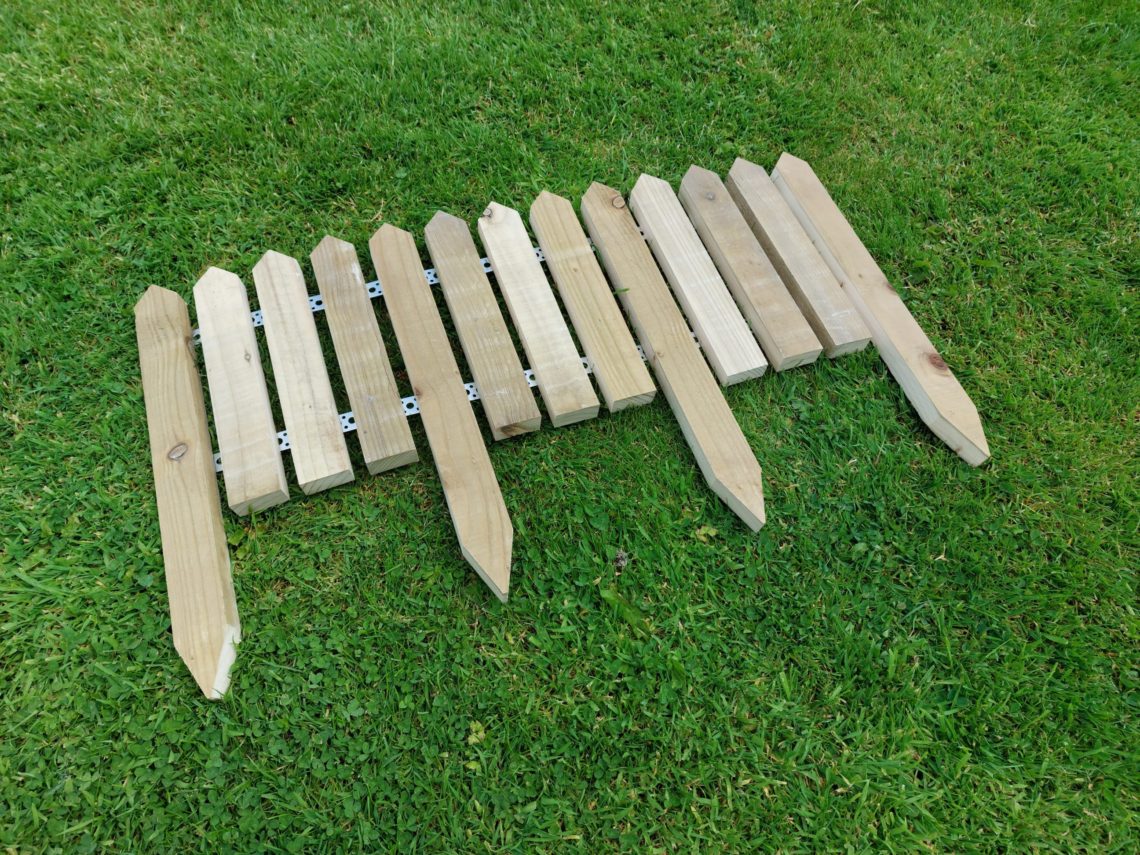
Decorative little fence
Like a full-size fence, that one also comprised pickets, rails and posts. It was made of scrap wood, but not any wood – those very offcuts came from the building of a real fence. 13 mini pickets in total, 4 of them were longer and served as posts that could be set in the ground. Rails were simplified and they were just perforated steel band straps. Each picket was fixed with screws in 2 places, allowing the fence to be set on a slope. It even came with a setting tool that made the pounding down a little easier and prevented damaging the posts.


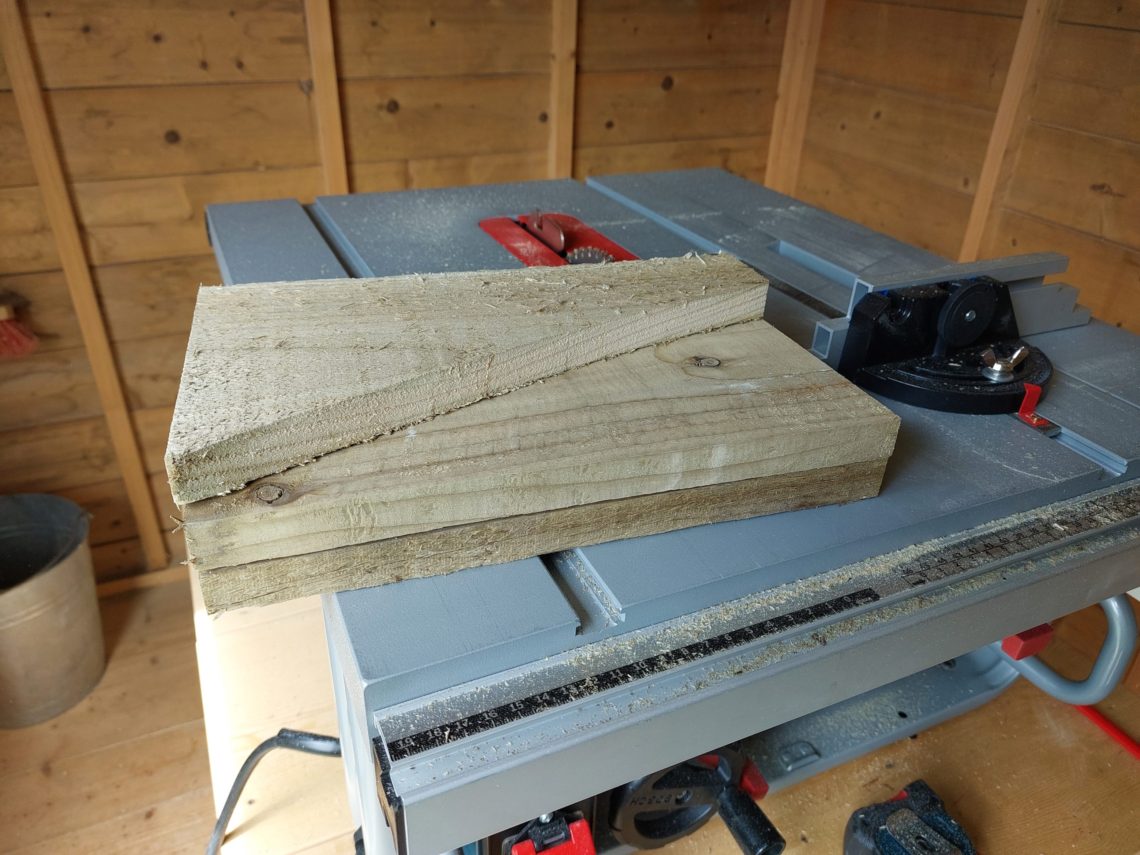
I started by cutting the off-cuts to length, I needed 1 longer board and a few shorter ones. Each board produced 4 slats, that’s why I had to use that triangle piece as well, to cut the 9th one. I was going to use as much of the material as I could, leaving just a few offcut pieces for a firewood pile.
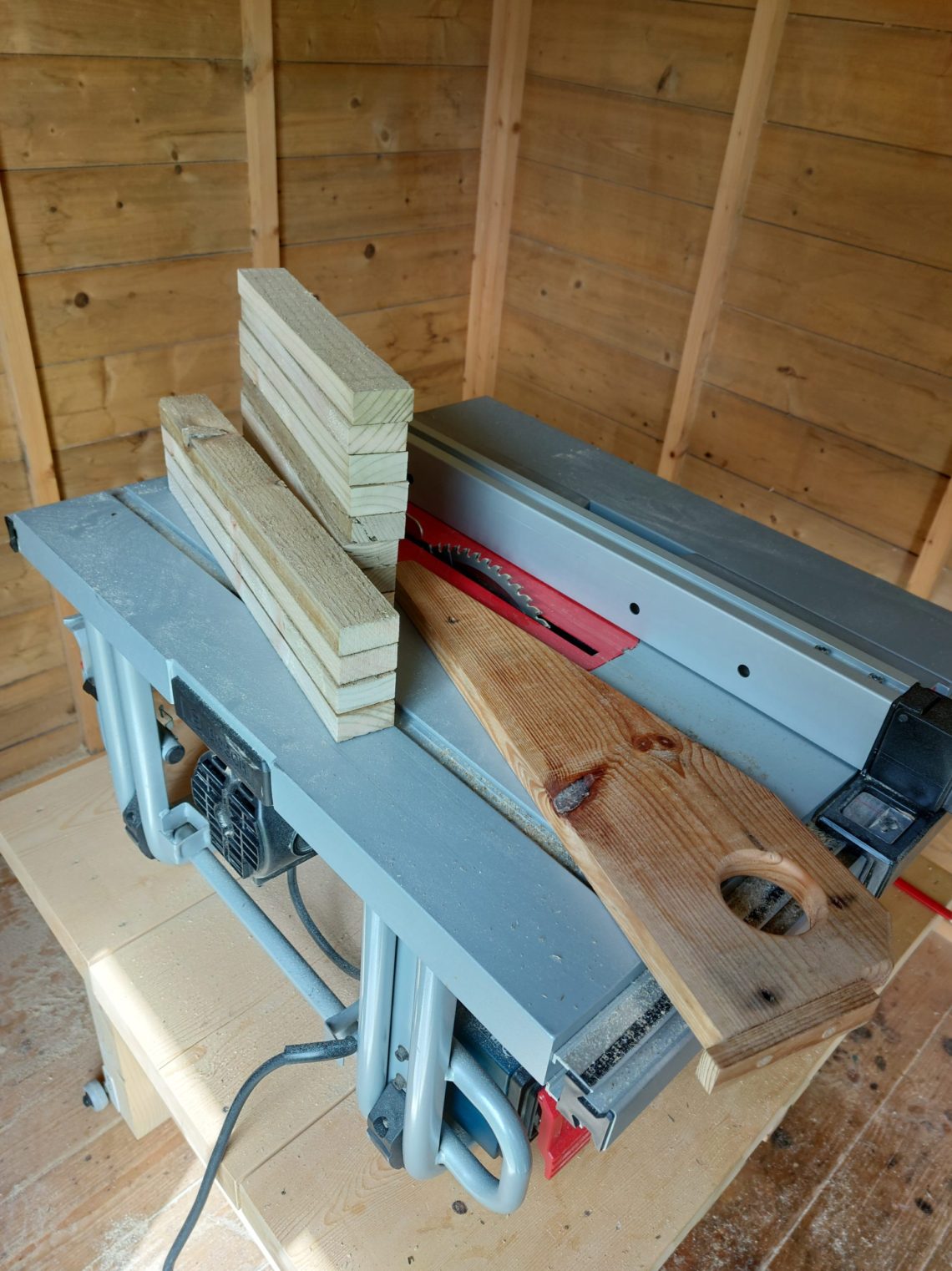


When all the pieces were rip-cut to width, I lined them up and decided to go with slightly shorter slats. I cut them to the new size and set my mitre gauge at an angle in order to shape their tops. The bottoms were pointed a little more, I cut them using the parallel fence as a guide and a scrap of wood as a jig. Not exactly a professional or sophisticated approach but it worked fine and was safe enough.
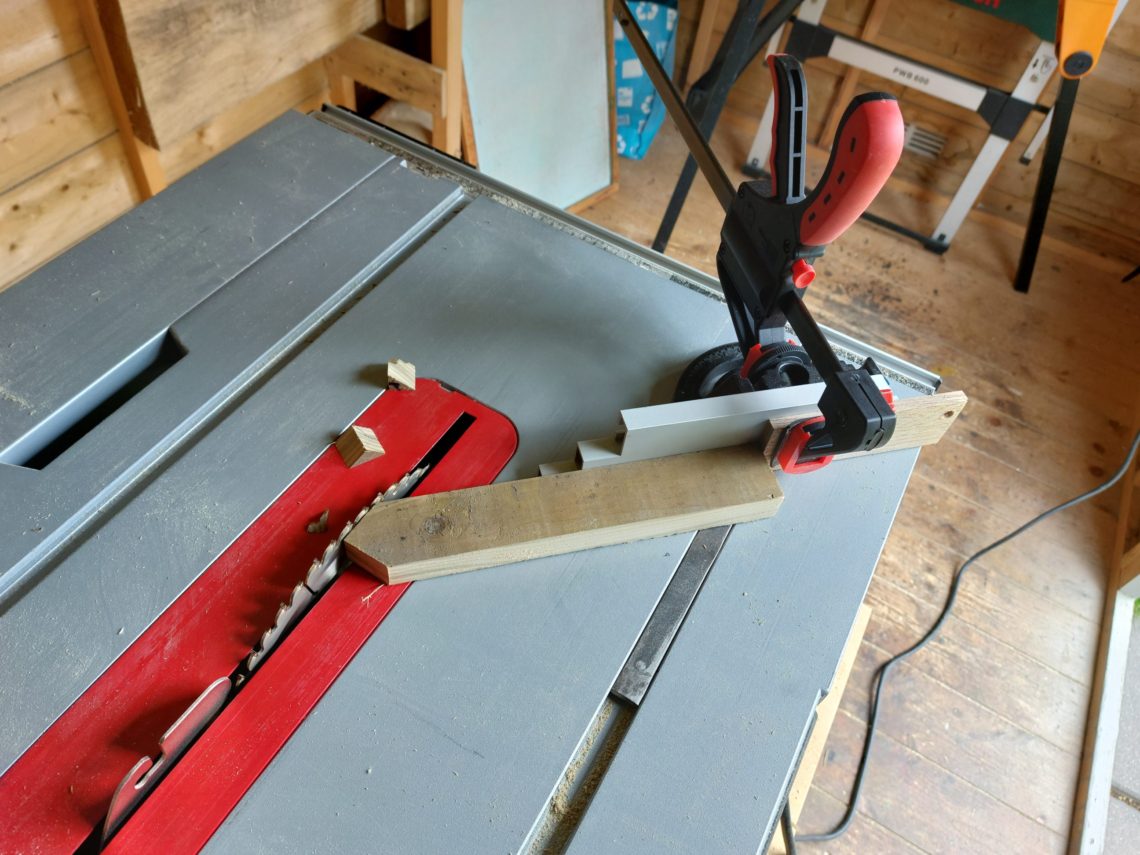
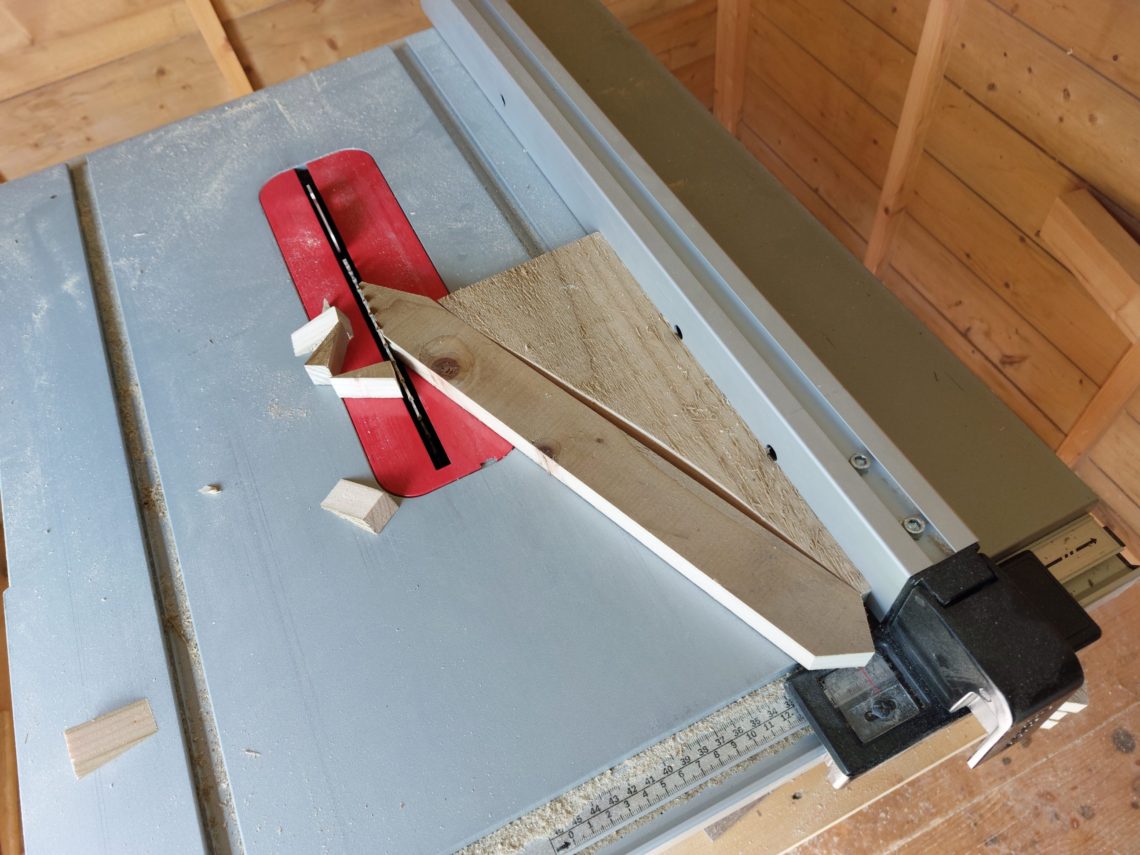
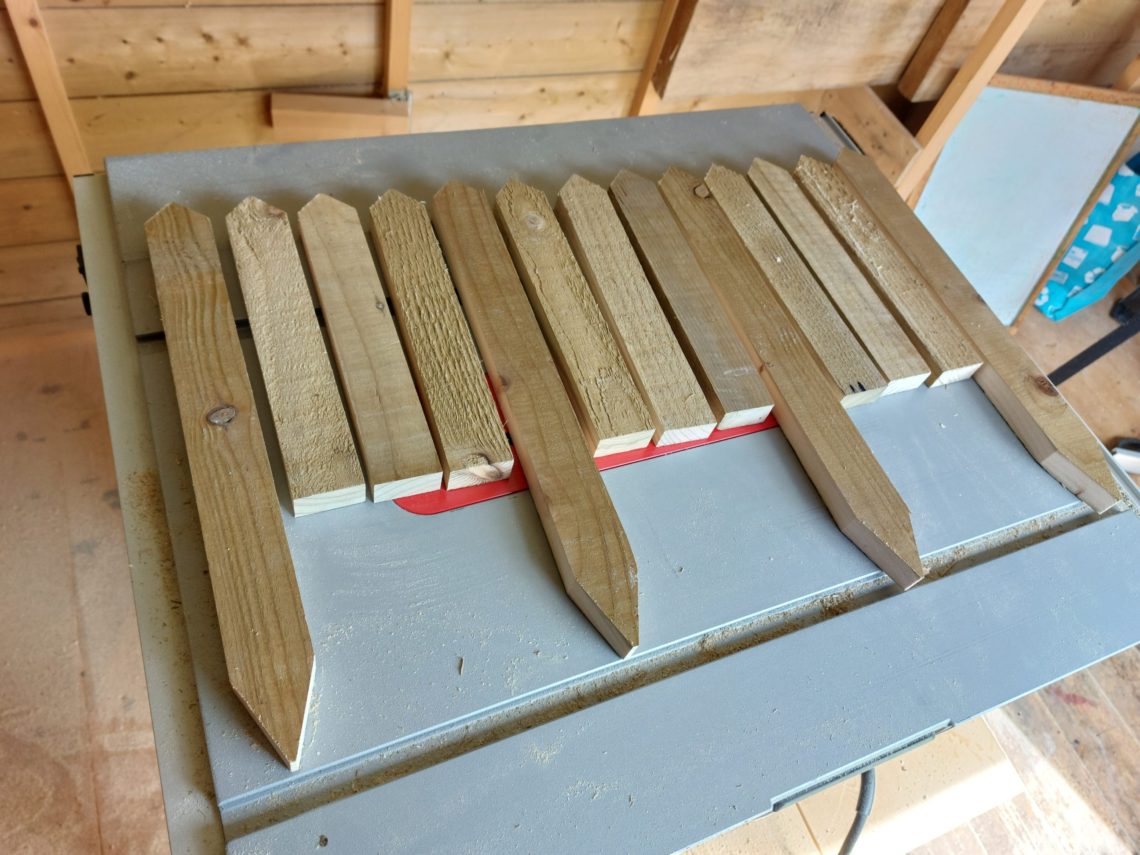
I raised the blade all the way up and cut out a notch in “the setting tool”. It only had to do the job once – to help me with the installation process – when I had the fence set in the ground I trashed the tool.


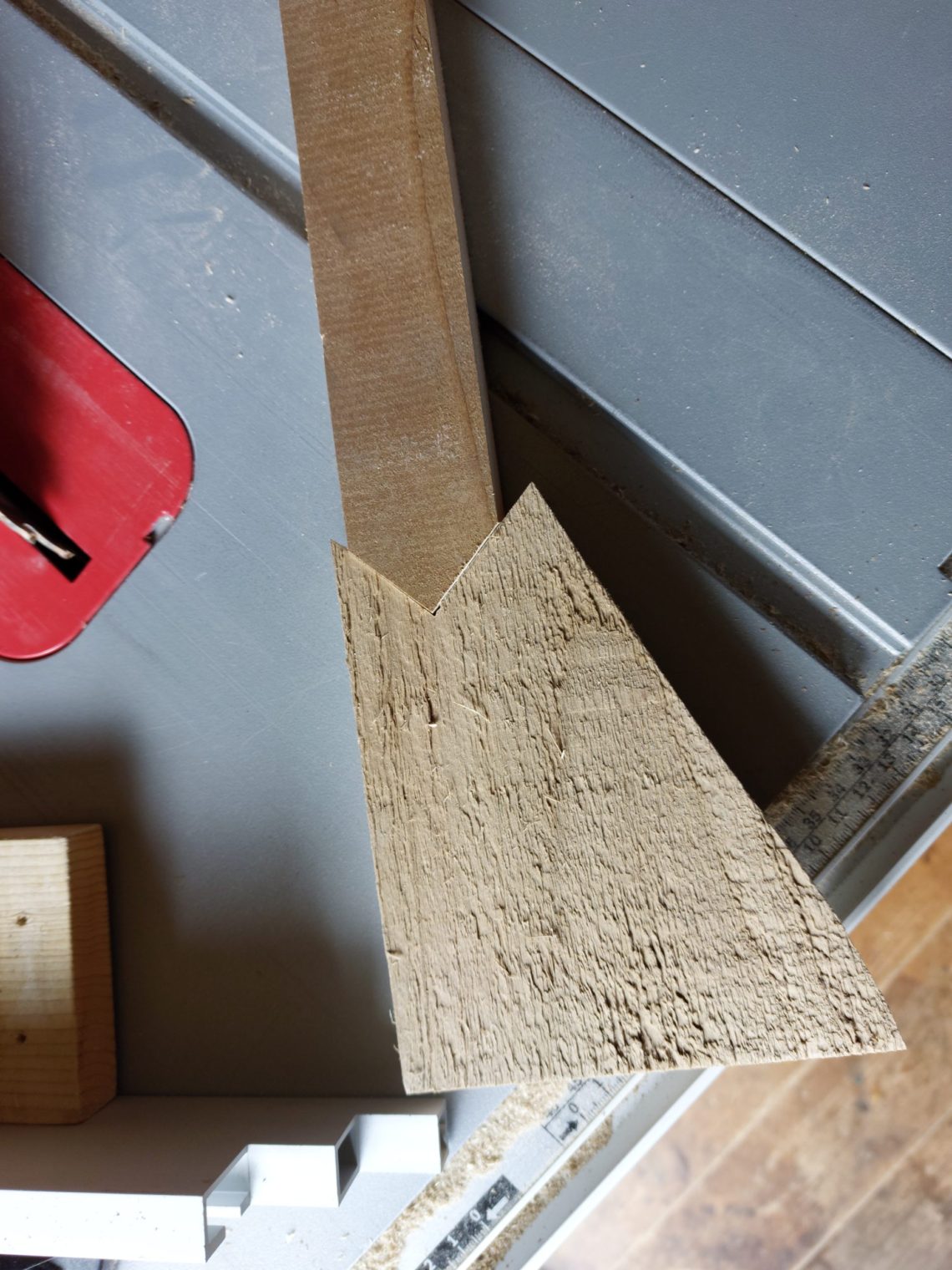
Using a spacer, I screwed in both steel straps and that was the last step of making that little fence. A very simple project that helped me to clean out the workshop, utilise wood scraps and get rid of the steel band roll that was almost empty and just covered the “rails” for that project.
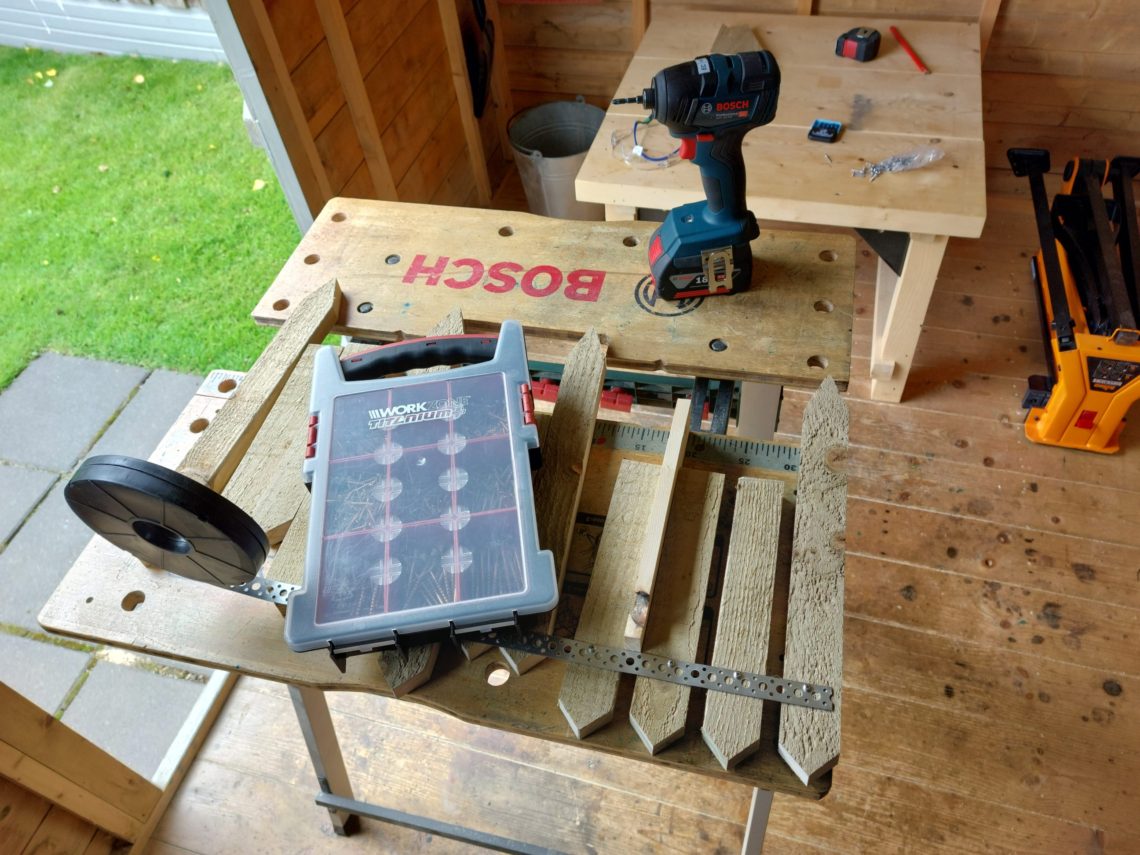


Even though it looked like something with 100 potential uses, it took me a few days to figure out where I wanted it to be. It started its journey in the ground, a little bent to match the curve of the stone ring. It was also set on a slight slope, and everything worked well as planned, but that wasn’t the perfect spot for it. I pulled it out and moved to the other place – it was used to mask an empty space below my bench-like plant stand. I simply nailed it to the wooden board to make sure it will not fall when the wind comes. That was it – purely decorative function and a quick setup. Its length seemed to be perfect for that opening below the stand and its height was exactly right to give plants the right amount of light.
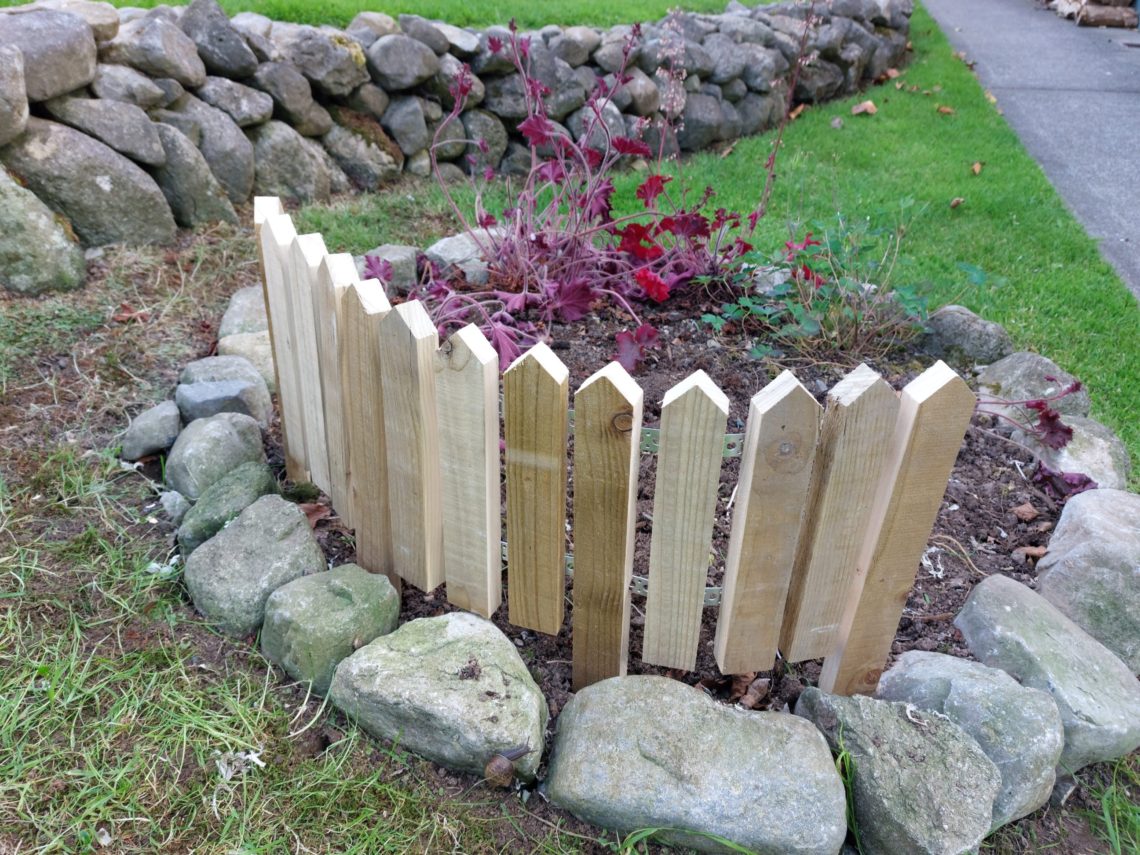
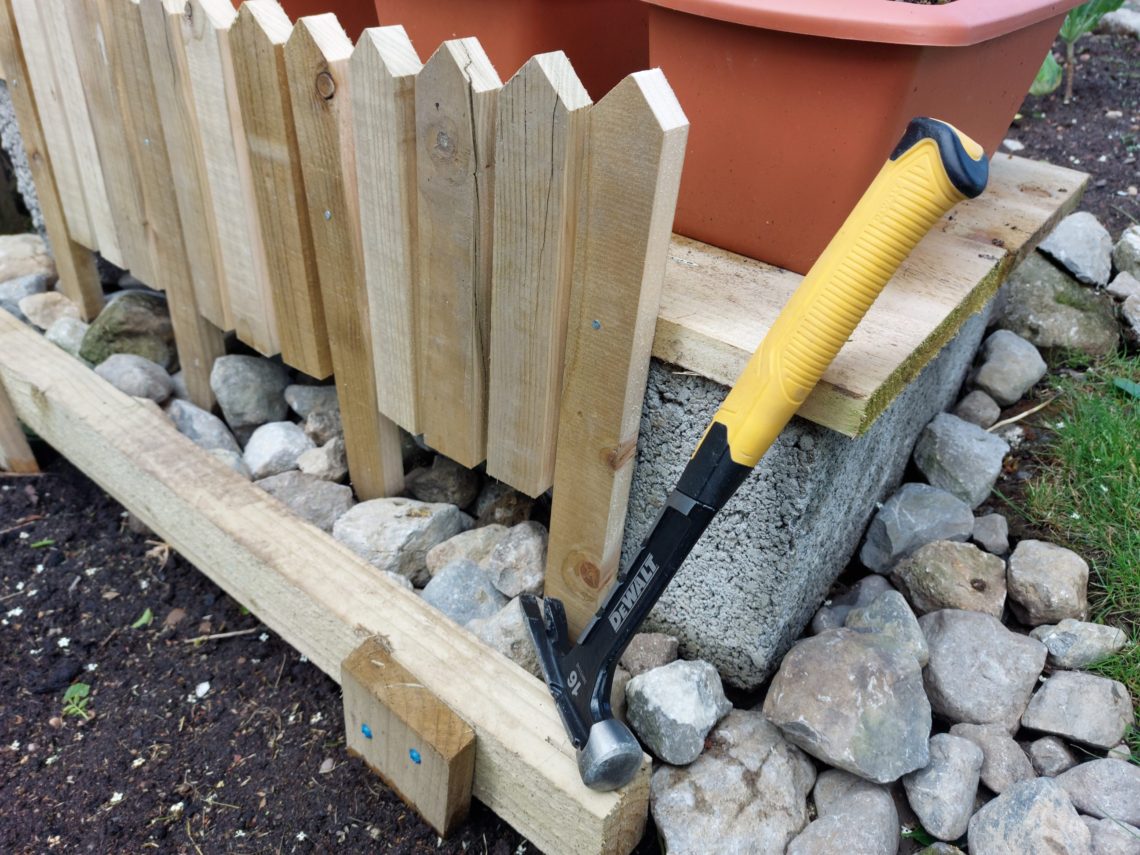
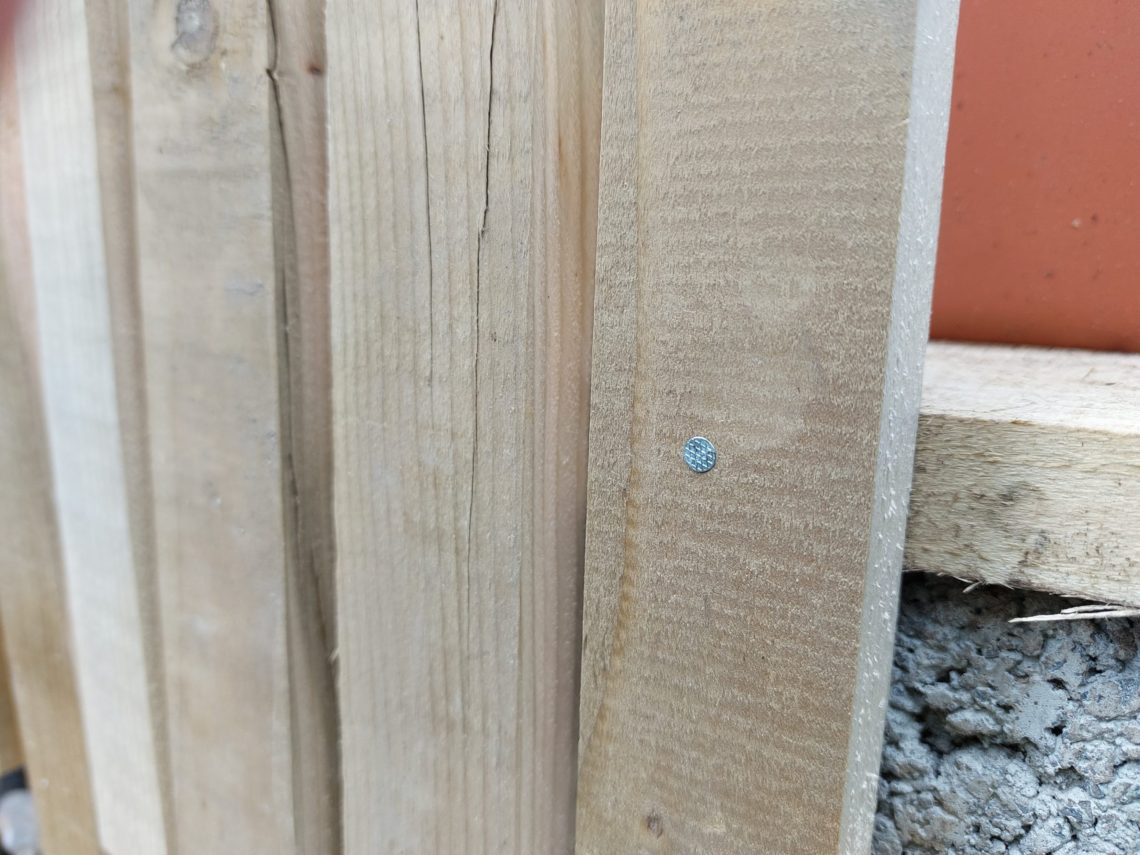

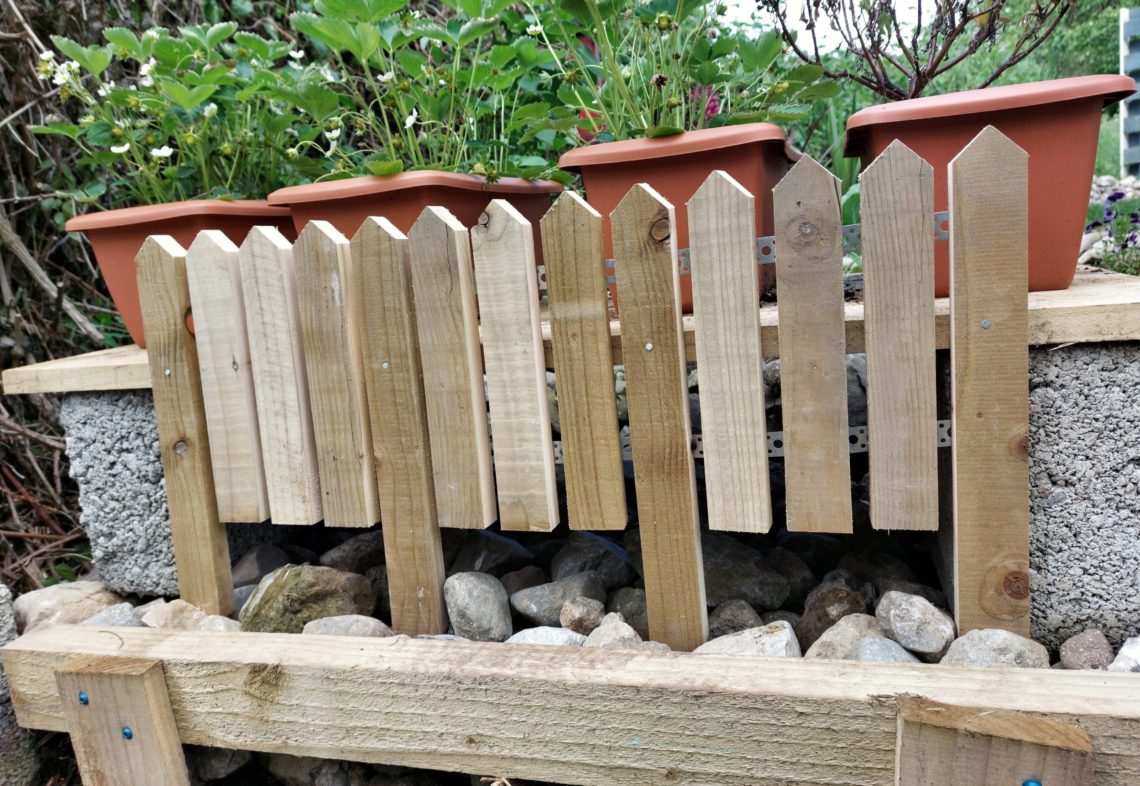


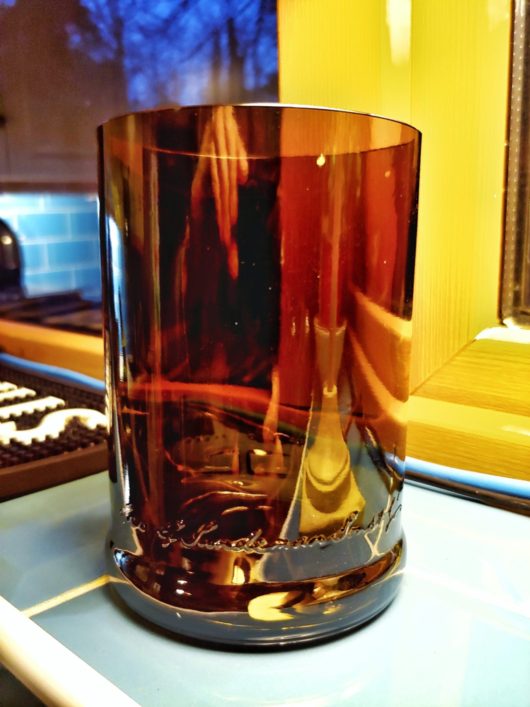
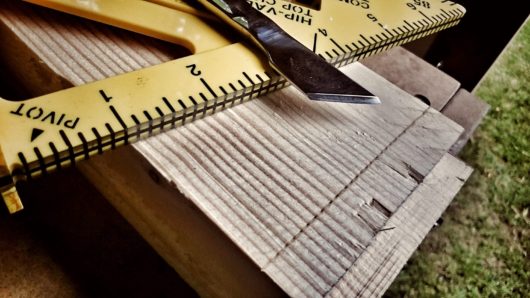

One Comment
Pingback: